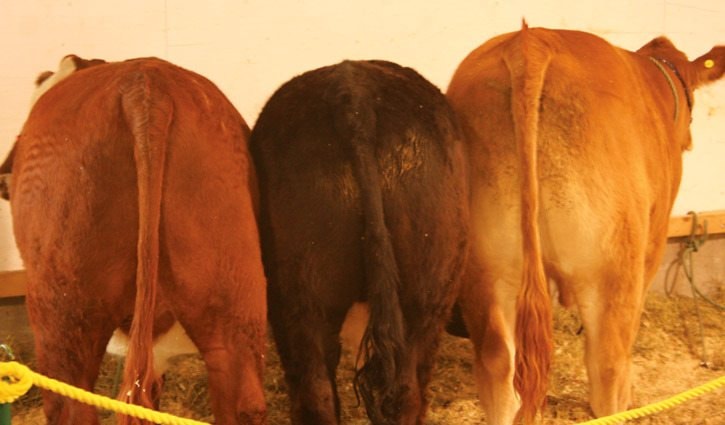A three-day livestock evaluation course will be taking place in Vanderhoof at the end of August to help local ranchers add more value to their beef.
The course runs every year in Calgary as part of the Calgary Stampede, but this year locals can get the benefits of the course right here in town.
The course has been in the works now for about a year after the BC Cattleman’s Association approached the College of New Caledonia (CNC) in Vanderhoof to ask them to coordinate the course.
“The Calgary Stampede does this every year but it’s quite a bit more expensive and people from the Vanderhoof area were going over there and taking this course but it’s far away and it’s during haying time and all that sort of thing,” said Debbie Montgomery, Programming Assistant with CNC in Vanderhoof.
“So the Nechako Valley Regional Cattleman’s Association (NVRCA) asked if the expertise could be brought to Vanderhoof and the college was asked to help coordinate the course,” she said.
CNC applied for the funding for the course from the Canada-BC Ranching Task Force Funding Initiative, a new provincial and federal funding program.
The course will run from August 22 to 24 and was timed so that it would coincide with the end of the Nechako Valley Fall Fair.
“We decided to do it after the fall fair when all of the 4-H kids are finishing off their animals ready for auction,” said Montgomery.
A few of the animals that are auctioned off at the fair will be used in the course to educate ranchers.
The animals will be selected by Jim Hansen, Business Development Officer, Beef Livestock Products, for Alberta Agriculture who is also one of the key speakers on the course.
On the first morning of the course, Hansen and the course participants will head to the Vanderhoof Auction Mart where he will teach the students how to visually evaluate those 4-H live steers for their use in the food industry.
“The simplified version is that students will learn a number of visual assessment tools so that they can look at that live animal and know what it’s going to yield once it has been slaughtered ... to the point where they can feel the rump and say okay this is going to give us this size of rump and this many steaks,” said Montgomery.
After the visual training, Rod Wendorff from Windy Ridge Ultrasound, will teach students how ultrasound results can help producers know a lot more about the quality and merit of their cattle’s beef and how it can help them to develop an elite herd.
The cattle will then be taken to Country Locker in town for slaughtering. On Tuesday, the group of students will see a representative from Igenity - a company which delivers a comprehensive genetic profile available from a single DNA sample.
DNA information can help beef producers to make more informed decisions about managing and marketing their cattle. It can help producers get information about their cattle’s feed efficiency, average daily gain, tenderness, meat marbling, quality grade, yield grade, fat thickness, ribeye area, longevity, calving ease, docility, and coat color to name a few.
The last speaker will be Richard Heninger from the Canadian Beef Grading Agency. He will give students an informative session at the college on Wednesday morning before heading to the Country Locker with the students to view the carcasses of the animals they previously judged. A local butcher will explain beef anatomy, cut identification and component yields.
“All these guys helping teach the course are really high speakers and to have them in our area is just amazing,” said Montgomery.
CNC and the Regional BC Cattleman’s Association would like to thank the Central Interior Feeders Association and the Sinkut Mountain Cattlemen for writing letters of support for the funding of the course. They would also like to thank Country Locker and the Vanderhoof Auction Mart for the use of their facilities.
